Welcome to one of the most active flamenco sites on the Internet. Guests can read most posts but if you want to participate click here to register.
This site is dedicated to the memory of Paco de Lucía, Ron Mitchell, Guy Williams, Linda Elvira, Philip John Lee, Craig Eros, Ben Woods, David Serva and Tom Blackshear who went ahead of us.
We receive 12,200 visitors a month from 200 countries and 1.7 million page impressions a year. To advertise on this site please contact us.
|

|
|
RE: Which scales?
|
You are logged in as Guest
|
|
Users viewing this topic: none
|
|
Login  | |
|

   
kitarist
Posts: 1715
Joined: Dec. 4 2012

|
 RE: Which scales? (in reply to Ricardo) RE: Which scales? (in reply to Ricardo)
|
|
|
quote:
This requires going into the physics I didn’t really want to.
Sorry, I was aware of all the physics stuff, and in more detail - Pythagorean tuning, just tuning, others, difference between tuning and temperament; regular vs. irregular. (also yes, of course same physics).
I haven't really found much on bottom-up justification of Ionian, except one author with a couple of papers, see Andrew Milne - "Tonal function in Harmonic Scales", 2005; everyone seems to go the historical/practice route.
Milne has another paper called "X-system" which spends a lot of time on tuning and strict mathematical derivations, p-limit systems etc. but this one I refer to above is especially relevant for our purposes.
He actually works out everything from first principles and key assumptions. He shows diatonic and some other (rare in practice) scales satisfy requirements for tonal function in harmony, but unfortunately seems to gloss over the flamenco flavour of the diatonic and only discusses in more detail its major and minor flavours, despite the diagrams he shows just above the section on Functional Consistency on page 10.
He lays out very clearly types of melodic and harmonic prototypes, [semitone-based] alterations in harmonic context, all laid out following from the few core assumptions, rather than from practice or history. You will not be surprised that the Neapolitan alteration is one of the three available ones, the other being parallel and shift (parallel: 3rd differs by semitone, e.g. C <-> c triads; Neapolitan: root and 5th differ by semitone, e.g. C <-> c# triads; shift: root, 3rd and 5th differ by semitone: e.g. C <-> C# or c <-> c# triads). Also derives prototypical progressions again just based on the core assumptions.
Anyway, so I guess bottom line, Ionian is the only one which does not require tweaking to work as a tonality. It seems though minor (tweaked aeolian) and flamenco (tweaked phrygian with the majorified tonic triad) are equally qualified. And I would like to extend/apply Milne's framework to flamenco tonality and see how it fits.
Now here is one of the several nice graphical representations I came upon (not from that author). This one is about showing the intervals in all seven scales derived from the modes (so again I would title these scales, not modes), shown as a clock with 12 semitone slices. (or imagine it is just tuning so the statements "perfect 5th" etc. below are exactly correct).
If you stare at these for a while, you start seeing useful things.
Like: a straight line cutting the clock face in half represents a tritone. The 5 is perfect 4th; the 7 is a perfect 5th.
The Lochrian scale is the only one where the 5th degree is not a perfect 5th interval (no "7" ) but is instead a tritone.
The Lydian scale is the only one where the 4th degree is not a perfect 4th (no "5") but is instead a tritone. It is also a mirror image of the Lochrian across the 0-6 axis.
And Phrygian is a mirror image of the Ionian across the same axis.
This also provides easy visual proof why a 7-tone scale within a 12-slot system must contain at least one tritone interval - because there are only 6 spots in one half of the clock face to have 6 "spokes" that can avoid being directly opposite each other; the 7th spoke will always end up directly across one of the other 6, thus making a straight line through, i.e. a tritone interval.

Images are resized automatically to a maximum width of 800px
 Attachment (1) Attachment (1)
_____________________________
Konstantin
|
|
|
|
REPORT THIS POST AS INAPPROPRIATE |
Date Dec. 4 2019 0:28:14
 |
|

   
kitarist
Posts: 1715
Joined: Dec. 4 2012

|
 RE: Which scales? (in reply to Piwin) RE: Which scales? (in reply to Piwin)
|
|
|
quote:
I made a spiral.
I hesitated to add this but hey, why not!
So after Chew's helix (spiral array) in 2000, in 2006 Harte et al.(*) took the helix and bent it around so that after three loops (a full octave), it arrives where it started to signify that pitches 1+ octaves apart are the same pitch class. Whereas the helix after 3 loops is just a three-loops-high tube.
So we get this below, except I think they screwed up and should have drawn the line rotating the other way to match the circle of fifths ascending as it goes clockwise around.
For clarity, I added the inset on the right re: semitone numbering and wrote in pitches in the case of tonic (0) = C. See how, if you mentally stand up the "tire" in front of you as if you are going to roll it slowly toward you, with C (0) facing you, E (4) is directly above C (0) on the outside diameter (that's one spiral loop completed), then comes Ab (8) above E (second spiral loop completed), and finally third loop completion brings up back to C(0), at which point the "tire" itself has completed one full rotation. Red colour for the pitch positions visible to us; grey for the ones on the opposite side of the torus/donut.
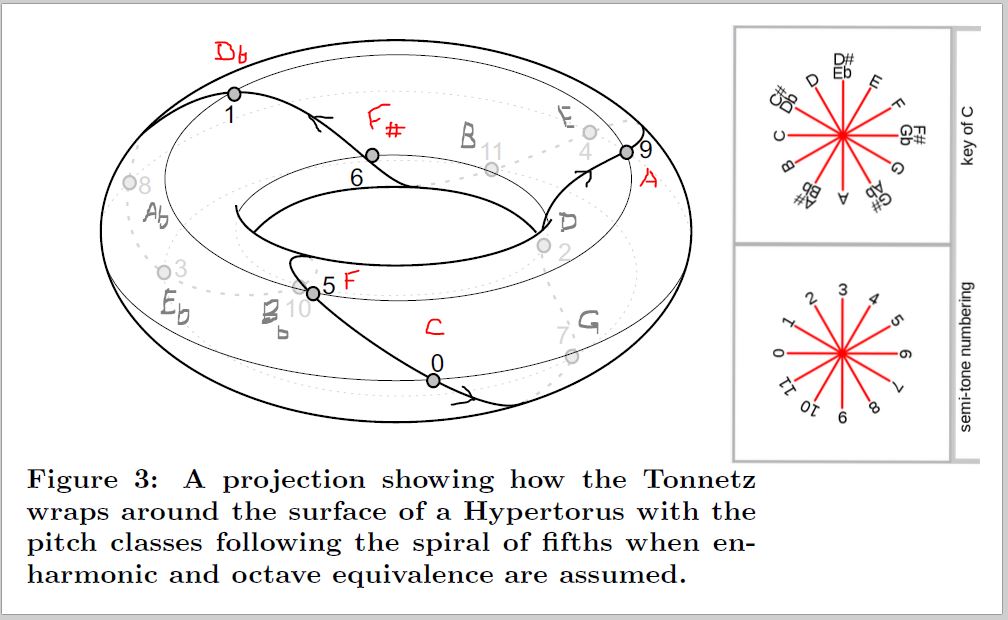
(*) C Harte, M Sandler, M Gasser, 2006. Detecting Harmonic Change In Musical Audio.
Images are resized automatically to a maximum width of 800px
 Attachment (1) Attachment (1)
_____________________________
Konstantin
|
|
|
|
REPORT THIS POST AS INAPPROPRIATE |
Date Dec. 4 2019 22:28:50
 |
|

  
Piwin
Posts: 3559
Joined: Feb. 9 2016

|
 RE: Which scales? (in reply to JasonM) RE: Which scales? (in reply to JasonM)
|
|
|
quote:
This thread hurts my Homer sized brain.
 Same! Same!
@kitarist
Jokes aside, I do find those kinds of representations interesting, although they fly over my head. I understand the basic tonnetz for just intonation and see the benefit of it. Among other things it gives a very clear representation of distances compared to a root chord (as compared to, say, learning chords linearly (degree by degree) off of a scale). But that's where I drop off. Once they apply the tonnetz to equal temperament and start making toruses, my brain shuts off 
On a side note, in the book "Modalogy" by Jeff Brent, which has some interesting bits and pieces about modes organized around the concept of radial symmetry, they include an "E Spanish Phrygian Scale". They list it as part of "common heptatonic scales with an added note", and more specifically as the 3rd mode of the C Bebop major scale. They describe it as "hybrid-Phrygian and Phrygian dominant" to be used "in phrygian environments and V7 of composite minor". Which is probably enough for the use of that scale for jazz players. But the real benefit I see in their descriptions of "octatonic" scales in this book is the funny names you end up with: "phrygiolian" (phrygian add nat.2) and "doriolian" (dorian add flat 6) are my favorites  Anyway, that may be a common nomenclature for you experts here but but it was the first time I ran into it and I got a good laugh out of it Anyway, that may be a common nomenclature for you experts here but but it was the first time I ran into it and I got a good laugh out of it 
_____________________________
"Anything you do can be fixed. What you cannot fix is the perfection of a blank page. What you cannot fix is that pristine, unsullied whiteness of a screen or a page with nothing on it—because there’s nothing there to fix."
|
|
|
|
REPORT THIS POST AS INAPPROPRIATE |
Date Dec. 5 2019 15:44:42
 |
|
 New Messages New Messages |
 No New Messages No New Messages |
 Hot Topic w/ New Messages Hot Topic w/ New Messages |
 Hot Topic w/o New Messages Hot Topic w/o New Messages |
 Locked w/ New Messages Locked w/ New Messages |
 Locked w/o New Messages Locked w/o New Messages |
|
 Post New Thread
Post New Thread
 Reply to Message
Reply to Message
 Post New Poll
Post New Poll
 Submit Vote
Submit Vote
 Delete My Own Post
Delete My Own Post
 Delete My Own Thread
Delete My Own Thread
 Rate Posts
Rate Posts
|
|
|
Forum Software powered by ASP Playground Advanced Edition 2.0.5
Copyright © 2000 - 2003 ASPPlayground.NET |
0.1103516 secs.
|


 Printable Version
Printable Version






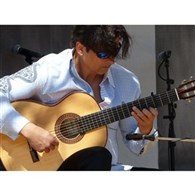






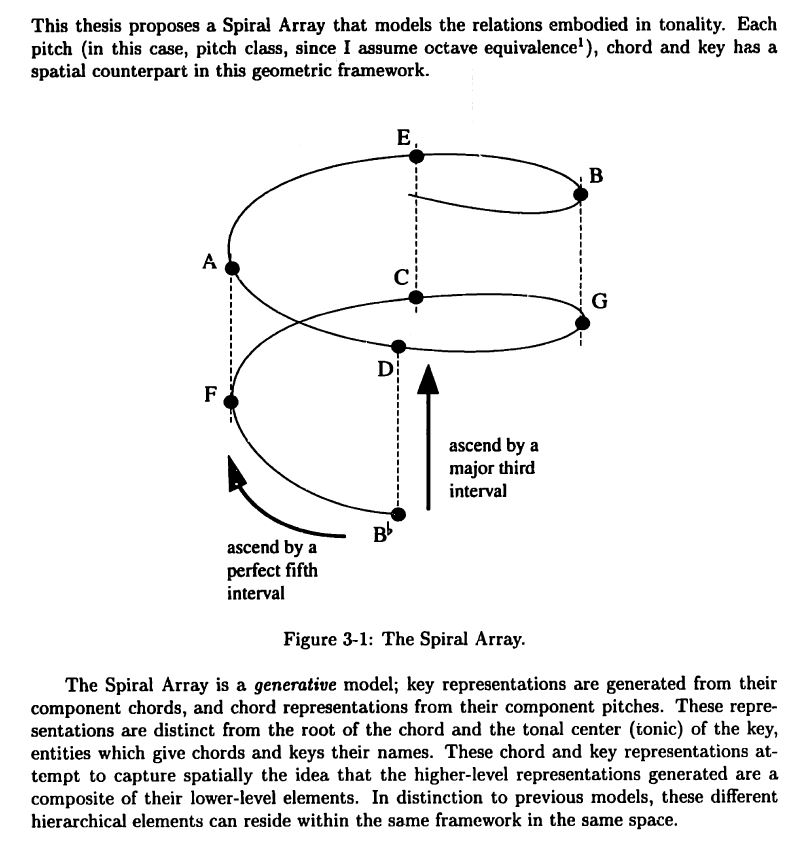
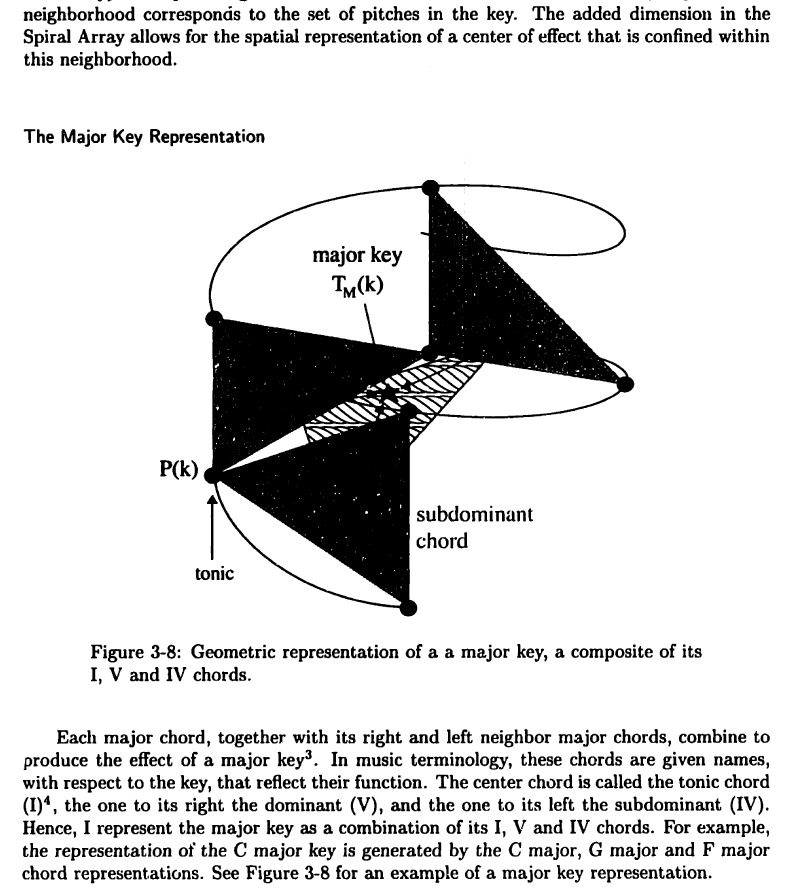


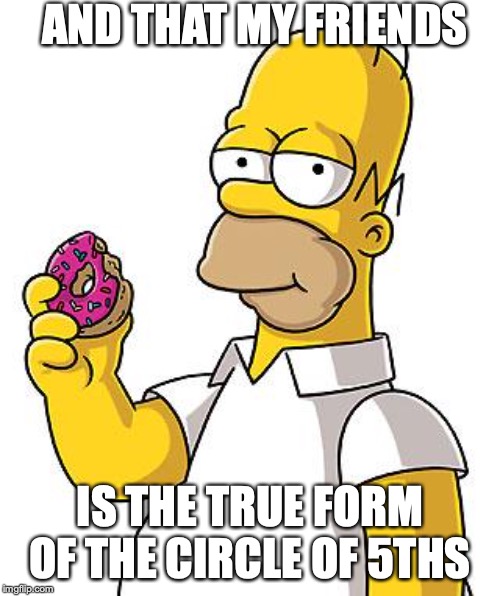



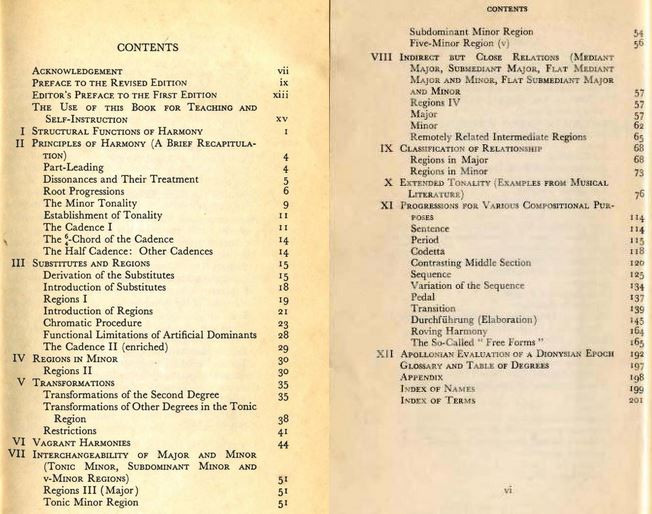
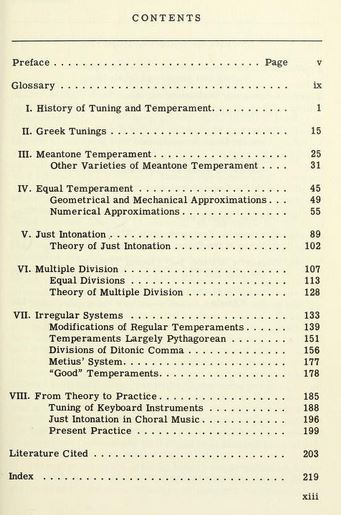
 New Messages
New Messages No New Messages
No New Messages Hot Topic w/ New Messages
Hot Topic w/ New Messages Hot Topic w/o New Messages
Hot Topic w/o New Messages Locked w/ New Messages
Locked w/ New Messages Locked w/o New Messages
Locked w/o New Messages Post New Thread
Post New Thread